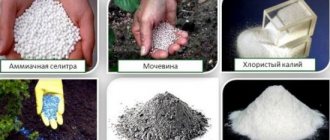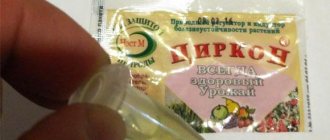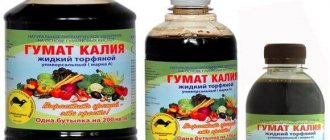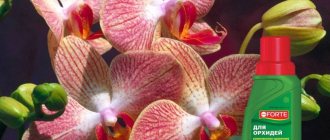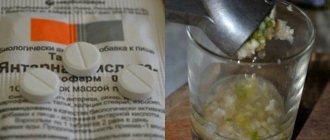Plants » Flowers
0
1382
Article rating
Kira Stoletova
Vitamins for orchids stimulate the growth and development of plants, contribute to their strengthening and reproduction. A vitamin cocktail helps speed up the blooming of buds without any harmful effects on the plant; its use will help the flower to take root at home.
Vitamins for orchids
The importance of vitamin supplements for plants
Regular vitamin supplementation ensures the normal course of life processes. The manifestation of healthy activity of an orchid involves :
- fast and intensive growth;
- adaptation to unstable conditions;
- complete absorption of microelements;
- complete metabolic processes based on retained moisture.
An orchid that receives sufficient nutrition develops well and produces large buds of rich color. Vitamins supply the plant with additional energy for processes associated with preparation for flowering and flowering itself.
What substances do diabetics especially need?
What vitamins are especially important for maintaining the health of a patient with diabetes? Each of these elements is important for the body:
- Alpha lipoic acid and gamma lipoic acid. Both of these substances help people with diabetes manage diabetic neuropathy, i.e. protect nerve endings from damage.
- Biotin. It works together with insulin in the body and independently increases the activity of the glucokinase enzyme. Glucokinase is responsible for the first step in glucose utilization and is therefore an important component of normal body functioning. Glucokinase is found only in the liver, and in diabetic patients its concentration can be extremely low. Biotin supplements can have a significant impact on glucose levels for diabetics.
- Carnitine. Necessary for the body to properly use fat for energy production. People with diabetes who take carnitine respond well to it, and blood cholesterol and triglyceride levels may decrease. Carnitine helps break down fatty acids in the body and binds acyl residues. For these reasons, it is able to prevent diabetic ketoacidosis.
- Coenzyme Q10. A compound that occurs naturally in the body and is involved in carbohydrate metabolism. Clinical trials using coenzyme Q10 show that supplements can significantly reduce blood sugar levels. CoQ10 also oxygenates the blood and may help in some cases of diabetic retinopathy.
- Inositol. It is an important part of several key body processes, including the health of cell membranes and blood cholesterol levels. In addition, inositol can help eliminate the effects of diabetic neuropathy.
- Manganese. Manganese deficiency is common in diabetics. Some scientists believe that it actually causes diabetes. Manganese may be a key factor in how enzymes in the body regulate glucose metabolism.
- Potassium. The introduction of insulin into the body and the treatment regimen used by many diabetics can cause potassium deficiency. By adjusting their diet, diabetics can improve insulin sensitivity (applies to type II diabetes) and its effectiveness
- Vanadium. Vanadium supplements may result in a slight increase in insulin sensitivity and may therefore allow diabetic patients to reduce the amount of insulin they need to control their blood sugar levels. Animal and human studies have shown a connection between vanadium levels and normal blood glucose levels.
- Vitamin B6. Neuropathy, serious damage to the nervous system due to high blood sugar, may be associated with a deficiency of vitamin B6, also known as pyridoxine. The vitamin may improve glucose sensitivity, especially in those with gestational diabetes (diabetes that occurs during pregnancy). Vitamin B6 also plays an important role in preventing complications associated with diabetes.
- Vitamin B12. May play an important role in the treatment of diabetic neuropathy. The presence of vitamin B 12 is necessary for the proper functioning of nerve cells. In extreme cases, it is necessary to take a course of B12 injections to replenish the deficiency and protect the nerves.
- Vitamin C: In type II diabetes, vitamin C may play a role in improving glucose tolerance.
- Vitamin D. An essential vitamin. It has a complex chain of metabolism, in which the sun plays a large role. Can increase insulin sensitivity.
- Vitamin E. Can improve blood oxygen saturation, fight toxins and increase insulin activity in the body. When the body does not have enough vitamin E, the body's cells can be damaged by increased exposure to free radicals. A sufficient amount of it reduces the risk of developing type II diabetes and reduces the risk of developing diabetic complications.
- Chromium. Takes part in the regulation of carbohydrate metabolism, increases cell sensitivity to insulin.
- Zinc. Necessary for insulin synthesis. And, in addition, the substance is a fairly strong antioxidant.
- Magnesium. Increases sensitivity to insulin, protects the cardiovascular system, regulates blood pressure.
Increasing insulin sensitivity can only help people with type 2 diabetes. But this does not mean at all that if you have type 1 diabetes, you do not need to receive a full complex of vitamins.
Vitamins must be used in accordance with the instructions for use. If there are no special instructions, you should take the drug once a day after meals, 1 capsule or tablet. It is advisable to do this in the morning.
Uncontrolled use can cause hypervitaminosis and a number of side effects (nausea, vomiting, lethargy). If such symptoms appear, you should immediately stop taking the drug and seek medical help.
The duration of vitamin therapy for patients with diabetes is 1 month. You can take 2 treatment courses per year.
What additional power sources are needed?
The orchid receives the necessary nutrients from moisture and air, but there are times when the nutrition it synthesizes on its own is not enough. At this time, she requires additional sources of nutrition - vitamins:
- B1 (thiamine) activates the growth and development of the root system;
- B3 (nicotinic acid) quickly restores the flower after illness and transplantation;
- B6 (adermine) strengthens the immune system;
- B12 (cobalamin) accelerates the growth rate of the plant;
- C (ascorbic acid) strengthens the immune system, protects the orchid from ultraviolet radiation, parasites and pests.
Important! Vitamin B1 must be added strictly separately. In combination with other vitamins, it is destroyed and loses its beneficial properties.
Vitamin B. Hypervitaminosis
Symptoms
Taking into account the above features of the metabolism of B vitamins, one could assume a statistical predominance of one-time, acute overdoses caused by more or less random intake of concentrated drugs in large volumes.
However, if we add psychological (self-prescribed treatment and prevention) and iatrogenic (inadequate dosages of vitamin therapy prescribed by a doctor) to the biochemical nuances, a significant proportion of chronic hypervitaminosis B also becomes clear. The vast majority of such cases are overdoses of B1, B3, B5, B6, B9 and B12. The most typical and common symptoms are increased excitability, emotional instability, tachycardia, headaches, nausea, redness of the skin, dyssomnia (certain sleep disorders).
Vitamin B1 (thiamine) in excess doses can cause anaphylactic shock, skin reactions such as urticaria and increased photosensitivity, kidney and liver dysfunction.
Vitamin B3 (niacin, vitamin PP, nicotinic acid) in overdose causes, in addition to the above-mentioned symptom complex, severe dyspepsia, dizziness, itching and paresthesia (false tactile sensations), muscle pain, cardiovascular disorders (high blood pressure in a standing position).
Acute hypervitaminosis B5 (pantothenic acid) can, among other things, cause dehydration.
Overdose of B6 (adermine, pyridoxine) – atactic phenomena in the form of impaired coordination of movements, confusion, convulsions, increased acidity of gastric secretions.
Hypervitaminosis B9 (folic acid) – cramps in the lower extremities, allergic reactions. In addition, in 2016 , the results of a study conducted by employees of the Johns Hopkins Institute (USA) on medical and statistical data for the period 1998-2013 were published. It has been shown that unreasonable and deliberately excessive consumption of folic acid and cobalt-containing vitamins B12 by pregnant women (and the importance of these vitamins during gestation is well known) increases the risk of autism in children by 2-3 times, especially if “hyperprophylaxis” occurred in the third trimester. In addition, B12 increases blood clotting and, accordingly, the risk of blood clots. In general, the results of the study make us think seriously and once again raise the question of the feasibility, the need for the most careful monitoring, taking into account all indications and contraindications for vitamin therapy and vitamin prophylaxis during pregnancy: in many cases, the optimal level of con in the blood was exceeded by 15-17 or more times . The most severe complications of hypervitaminosis B include renal and liver failure, steatohepatosis, pulmonary edema, anaphylactic shock, exacerbation of gastroenterological and cardiac diseases.
It is interesting to note that the clinical picture of hypervitaminosis B is largely reminiscent or even repeats the symptoms of hypovitaminosis.
Indications and contraindications
You need to feed the orchid with vitamins only when it needs it. Both excess and untimely receipt of additional nutrition can cause depression of vital functions or its death.
Indications for feeding with vitamins are the following periods and conditions of the orchid::
- autumn (lack of light and fresh air);
- loss of the root system (loss of pieces of roots);
- lack of flower appearance for a long period (up to several years);
- adaptation period after transplantation (prolonged weakening of the flower);
- general lethargy of the plant (wrinkled and curled leaves of a pale color);
- diseases (parasites and pathogenic microflora).
Contraindications for adding vitamins include the following::
- flowering period;
- dormant period (after flowering, when the plant naturally gains strength);
- good condition of the plant (dense, smooth leaves, elastic shoots, succulent flowers).
Important! A flower overfed with vitamins for prevention may die. Fertilizing is used only when absolutely necessary.
Treatment at home with group B additives
B1 (thiamine)
Water-soluble vitamin. Activator of plant root system growth, protection against early aging . Increases the intensity and duration of flowering. Used independently.
- Dosage: 1 ampoule 1 ml.
- Dilution: in 1 liter of water.
- Treatment: spraying once a month, during flowering.
B3 (nicotinic acid)
Accelerates the formation of flowers and sprouts . Involved in hormonal metabolism. Can be mixed with other vitamins except B1.
- Dosage: 50 mg tablet.
- Dilution: in 1 liter of water.
- Treatment: spraying 2 times a month.
B6 (adermin)
Increasing immunity, accelerating recovery from illness . Increases the adaptive properties of the plant. Combines with B3.
- Dosage: 10 mg tablet (pyridixine, pyridoxyamine, pyridoxal).
- Dilution: in a liter of water.
- Treatment: during orchid transplantation and after illness. No more than 3 times a month.
B12 (cobalamin)
Recommended during cold periods, when there is a lack of light and air . Accelerates the growth rate of orchids, affects the formation of young and maintenance of old peduncles. Combines with B3.
- Dosage: 500 mcg tablet.
- Dilution: in 1 liter of water.
- Treatment: spraying no more than 2 times a month.
What vitamins does an orchid need?
Phalaenopsis receives beneficial components from soil, air and moisture. If there is a lack of vitamins, orchids need to be nourished so that they always delight with their appearance. It is recommended to feed the flower in early autumn, when there are fewer nutrients. The main elements for feeding phalaenopsis are as follows:
- Nitrogen - helps grow leaves. If there is a deficiency of this element, the flower will begin to lose leaves and, over time, may even die.
- Potassium - improves the process of photosynthesis of the flower. In addition, this substance counteracts various diseases and pests.
- Phosphorus is responsible for flowering and its duration.
- Ascorbic acid - acts on phalaenopsis in the same way as on the human body. Vitamin C strengthens the plant's immunity and also counteracts flower diseases.
It is not recommended to fertilize orchids during the flowering period, since during this period phalaenopsis does not need vitamins (as evidenced by the flowering process itself).
Important! When fertilizing orchids at home, you need to be extremely careful. An excess of nutrients can be more dangerous than a lack of them. It is necessary to nourish the flower with vitamins only if it is really necessary. Otherwise, the plant may die from an overabundance.
Many flower growers are faced with a situation where their clients are in a “depressed” state. Like people, flowers can go through periods of vitamin deficiency. A person’s task is to notice the crisis in time and restore the vitamin balance. Moreover, the plant may need nutrition after transplantation or exposure to any substances. A vitamin cocktail can help return the flower to its original state.
There are many recipes for healthy mixes that can be used if you want to improve the condition of phalaenopsis. The most popular cocktail that is used when replanting plants and restoring their appearance is a mixture of vitamins B1, B6, B12 and succinic acid. The flowers are sprayed with the solution several times over several days. After some time, the effect should be noticeable.
Often indoor plants lose their roots, making them vulnerable and requiring intensive care during this period. There are special vitamin cocktails for orchids to grow roots. They are based on B vitamins. These substances promote enhanced growth of the flower, including the root system. Also, feeding with B vitamins will help prolong flowering for a longer period:
- B1 prevents premature aging of phalaenopsis. To properly fertilize a plant, you need to dilute one ampoule of the vitamin, purchased at a pharmacy, in one liter of water. The flower is sprayed with this solution once a month, preferably during flowering.
- B3 stimulates orchid flowering and revives the flower. Nicotinic acid helps the development of new leaves and sprouts. This substance also helps phalaenopsis quickly get used to the new environment when transplanted. To prepare a vitamin spray, you need to dilute 1 vitamin tablet in a liter of warm water. It is recommended to spray the roots directly during the transplantation process and several times a month afterwards.
- B6 also promotes rapid adaptation after transplantation and protects against disease. The substance protects against pests and the harmful effects of chemicals.
- B12 promotes normal growth and development of orchids due to better oxygen supply to plant cells. The flower is sprayed with a solution of one tablet of the substance in a liter of water.
Composition of a vitamin cocktail for resuscitation
To prepare a vitamin cocktail, you can mix 2 or more vitamins, taking into account their compatibility with each other. Cannot be combined :
- B1 – with none of the B vitamins;
- B3 – from B1;
- B6 – with B1 and B12;
- B12 – with B1 and B6.
Combine well:
- B3 and B6;
- B12 and B3.
The inclusion of ascorbic acid in the vitamin cocktail will increase the effectiveness of the product.
It is necessary to give a cocktail for resuscitation during periods of weakening of the plant and after transplantation. The selected components are dissolved in 1 dose per liter of water, and then sprayed on the flower.
Reference! Spraying should be done with a spray bottle with maximum atomization. The stream is directed so that the product hits the underside of the leaves.
How to use
First of all, we need to clarify: acids cannot be used all together. A minimum of ten days should pass between each use. This time is enough for the flower to absorb and process all the fertilizer received. This also ensures that the flower does not get burned. It is imperative to follow the dosage. Add 2 grams of succinic acid per liter of water, 0.20 ml of boric acid, and one tablet each of nicotinic and ascorbic acid.
Problems of deficiency and excess
If there is a lack of vitamins in an orchid, the following symptoms are observed::
- slower growth and flowering;
- shallowing and paleness of flowers;
- chlorosis damage;
- death of leaves and root system.
If you overfeed an orchid with vitamins, the following symptoms will appear::
- violation of the growth rate of the measles system;
- decreased concentrations of manganese and iron (pale yellow or whitish leaves);
- interveinal chlorosis.
If there is a lack of vitamins, it is advisable to regularly feed the plant with B vitamins with the addition of ascorbic acid. If the plant is overfed, you need to stop adding vitamins for up to 2 months.
Vitamin cocktails and supplements will help keep the orchid healthy for the entire period of its life . Overfeeding a plant is as dangerous to its life as a lack of vitamins. Orchids have indications and contraindications for vitamins, which are recommended to be known and taken into account.
Nicotinic acid for orchids
A cheap, affordable product - nicotinic acid for orchids is sold at any nearby pharmacy. This is regular vitamin B3. True, in the instructions for this medication you will not find instructions for use in floriculture. It is prescribed to people for hypovitaminosis and for complex therapy of cardiovascular, neurological and other diseases.
Experienced flower growers recommend using the drug for growing roots and leaves, that is, to restore the plant after flowering or after being in unfavorable conditions. After applying this fertilizer, the turgor of the leaves is quickly restored and the measles system begins to actively grow. If you're lucky, judging by the reviews of flower growers, often after treatment with vitamin B3, the peduncle produces a baby.



